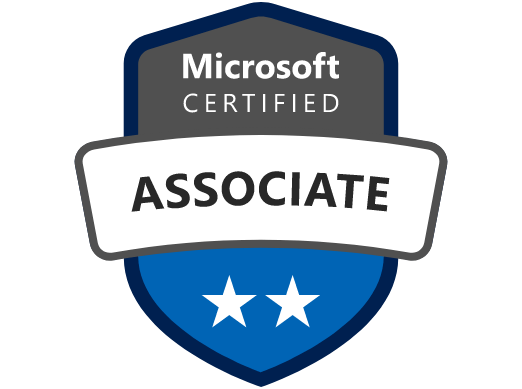
PL-100: Microsoft Power Platform App Maker
Prepare to pass the PL-100: Microsoft Power Platform Apps Maker Certification Exam in a 3-day course.
Microsoft Certified: Power Platform App Maker Associate
If you’re a business professional with deep expertise in your solution domain and you want to use your passion for building Microsoft Power Platform solutions to simplify, automate, and transform tasks and processes for your team, this certification is designed for you. You must have the skills to accomplish key technical business analyst tasks, such as data modeling, basic UX design, requirements analysis, and process analysis.
You fit the profile for the app maker role if you’re self-directed and solution-focused, and you work with the maker tools of Microsoft Power Platform to solve business problems. You might have experience with Visual Basic for Applications, Excel PivotTables, Teams, and other tools. Although you might not have formal IT training, you’re comfortable working with IT administrators and Microsoft Power Platform developers using technology to solve business problems. You’re responsible for:
- Designing and creating apps and automating workflows.
- Analyzing and visualizing data in context of an app or automated workflow.
- Implementing and managing apps and automated workflows.
Course Outline
Create a high-level design
identify required data sources for a business solution
describe real-world objects as tables
describe the expected user experience for targeted devices and describe the differences between Microsoft Power Platform app types
create a high-level data model including source, volume, and intended uses
Identify Microsoft Power Platform components
determine the required Power Apps app type
determine when to use Dataverse for Teams
map a problem domain to Microsoft Power Platform tools
identify options for implementing business logic
describe connectors
describe unmanaged solutions
describe uses cases for desktop flows
describe use cases for chatbots
Design data models
determine required tables
identify relationships between tables
identify columns and data types
Design the user interface (UI) for a business solution
identify opportunities for component reuse
apply UI standards
identify the model-driven forms and Dataverse views that are needed
Design reporting
define data output requirements
define visualizations for Power BI dashboards
define visualization requirements for model-driven dashboards
Manage Microsoft Power Platform development environments
create a solution
add existing apps and flows to a solution
run solution checker and interpret results
Create model-driven apps
compose model-driven apps
create a site map
create and configure Dataverse table forms
create and configure Dataverse table views
embed model-driven apps in Microsoft Teams channels
embed a canvas app on a form in a model-driven app
manage versions of canvas apps
publish and share canvas apps
share model-driven apps
Create canvas apps
create canvas apps
connect to data sources in canvas apps
build canvas apps screens
compose Microsoft Power Fx formulas
implement collections and variables
interpret App checker results
add canvas app assets and components to screens
Configure Microsoft Dataverse
create tables and table columns based on a data model
link tables by using lookups or relationships
load or create data records for testing and development
publish customizations
create Dataverse business rules
configure security roles
Create Microsoft Power Automate flows
create business process flows
create cloud flows
configure triggers
build scheduled, automated, and instant flows
configure flow steps
test a flow
implement common expressions and loops
create adaptive cards for Microsoft Teams
create and monitor approvals from Power Automate, Microsoft Teams, and SharePoint
share flows
Create Microsoft Power Virtual Agents chatbots in Microsoft Teams
create a chatbot
test a chatbot
publish a chatbot
Create Microsoft Power BI reports
create Power BI report by using Power BI Desktop
create Power BI report by using Power BI service
embed canvas apps in Power Bi reports and dashboards
share Power BI reports and dashboards
Implement other reports
merge data from a data source into a Microsoft Word or Excel template
create model-driven dashboards
embed Power BI content in Power Apps
Describe AI Builder models
identify model types including prebuilt and custom models
describe the process for preparing data and training models
use a model from within Power Automate or Power Apps
3 Days

